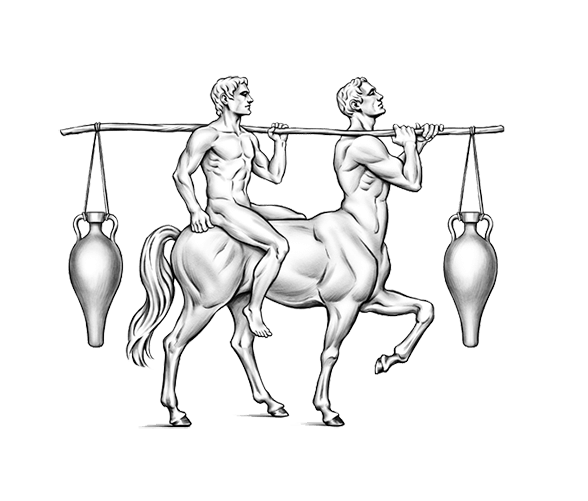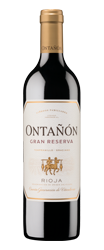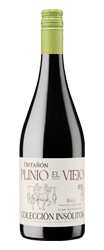Insólitos collection
Adventurers
Contrebia
A happy quirk of nature
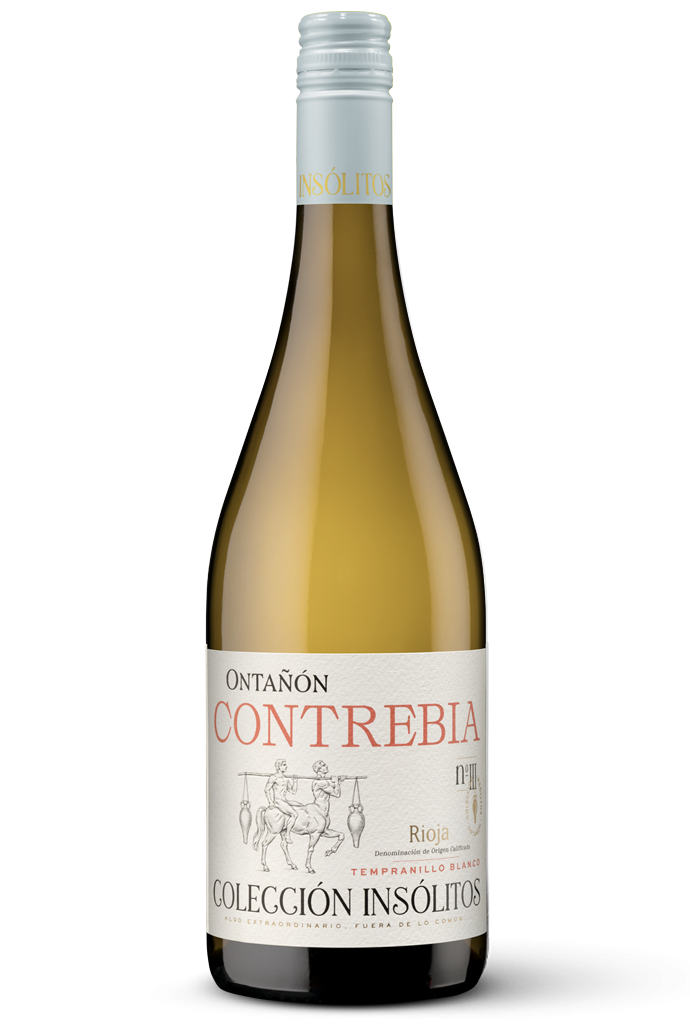
Contrebia
Leucade
Tempranillo blanco
Why do we call our tempranillo blanco wine Ontañón Contrebia?
Tempranillo blanco is an indigenous variety and unique to Rioja, as it was in our region that it appeared as the result of a natural mutation in a single red tempranillo vine plant in the nineteen eighties. This means that here we have a variety which is unique in the whole world, as Riojan as can be, and exclusive to our appellation.
To say tempranillo blanco is to say Rioja and also Rioja Oriental, because it was in Murillo de Río Leza (a small town in this zone) that a grower found a spur on a red grape vine which each year would produce white grapes. A quirk of nature? Maybe. The thing is, our generation has had the honour of witnessing the birth of a new variety and within just a few years its integration in the catalogue of approved varieties of the Control Board, after a scientific and sensory process in which its qualities and organoleptic values were studied in depth.
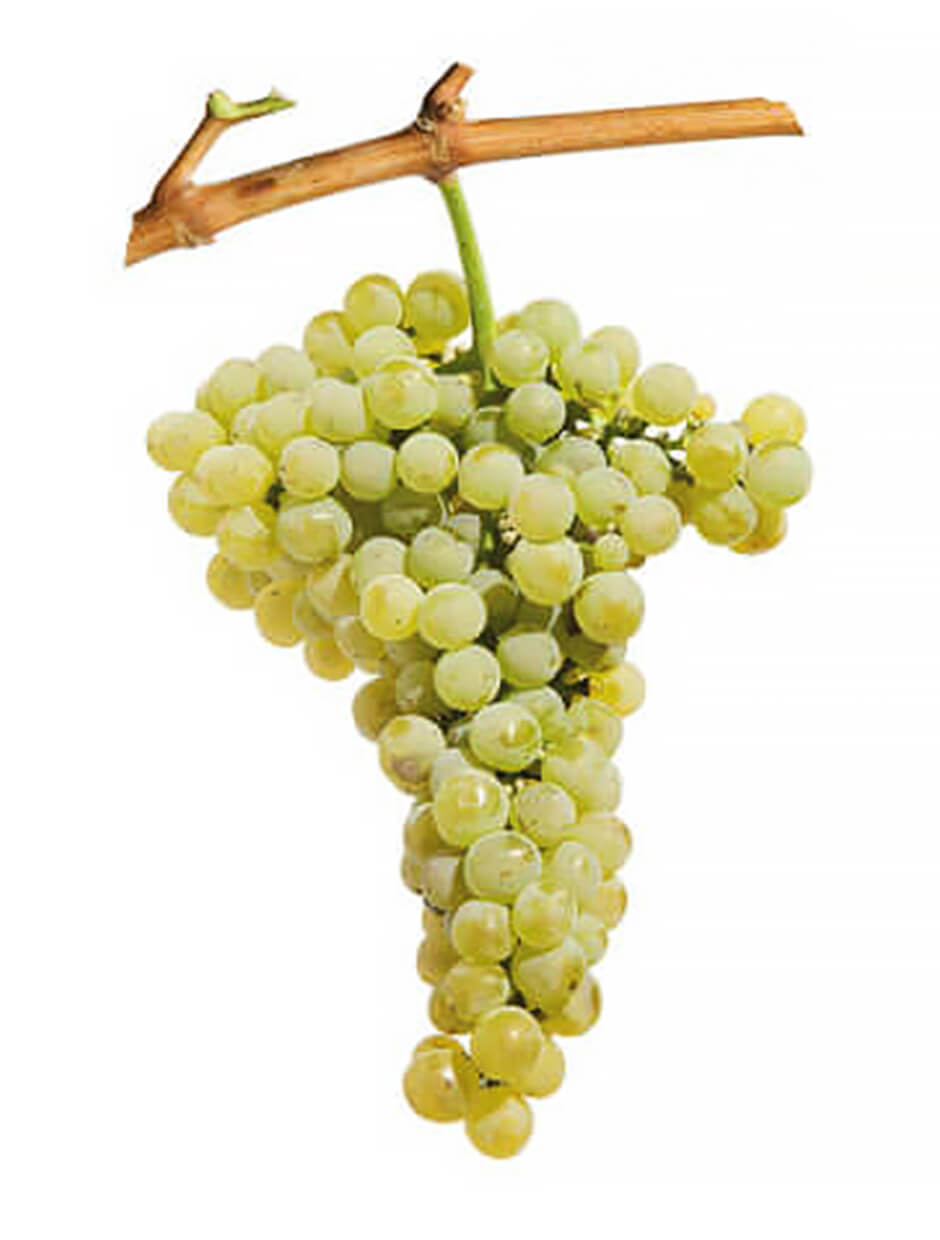
Moreover, numerous theories exist regarding the roots of vine cultivation in Rioja and when and how the primitive winemaking techniques reached our land in different eras of history. The oldest existing document making reference to the presence of vines in La Rioja dates from the year 873. Specifically, it appears in the Cartulary of San Millán and speaks of a donation in which the Monastery of San Andrés de Trepeana appears (nowadays the locality of Treviana, in Rioja Alta).
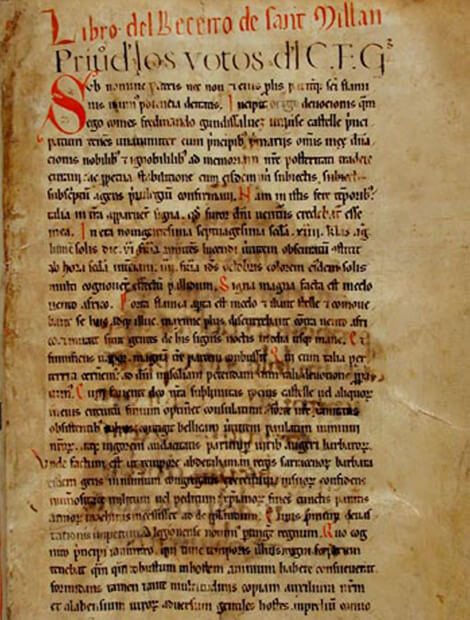
Cartulary of San Millán, from the year 873.
However, although the arrival of viticulture in La Rioja was believed to be related to the time of Romanisation of the Iberian Peninsula and in particular, of the Ebro Valley, the discovery of a wine press in the Celtiberian settlement of Contrebia Leucade, in Aguilar del Río Alhama (in Rioja Oriental), has confirmed that its inhabitants were already making wine in a generalised way at least since the second century before the Christian Era. The director of the excavations, José Antonio Hernández Vera, gave an interview to the newspaper Diario La Rioja about such a unique find. It was a wine press located in the northern sector of the Celtiberian city, of which the general structure has survived: the grape treading basin and the ‘torcos’, that is, the pools into which the pressed must ran. “It was used at the time of the harvest and once this was over it was cleaned and used for other purposes, such as storing the wine in large jars”.
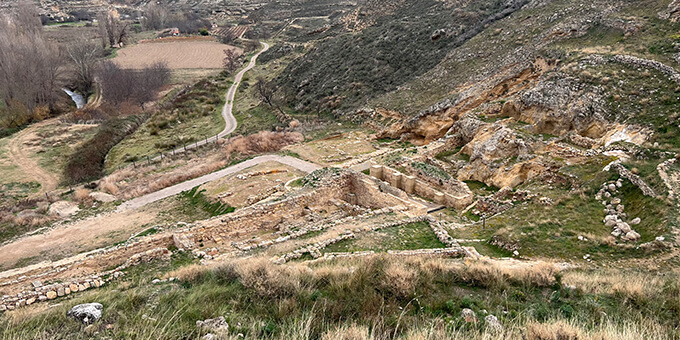
The archaeological site of the Celtiberian city of Contrebia Leucade.
The reason for using such an iconic name for the Ontañón tempranillo blanco
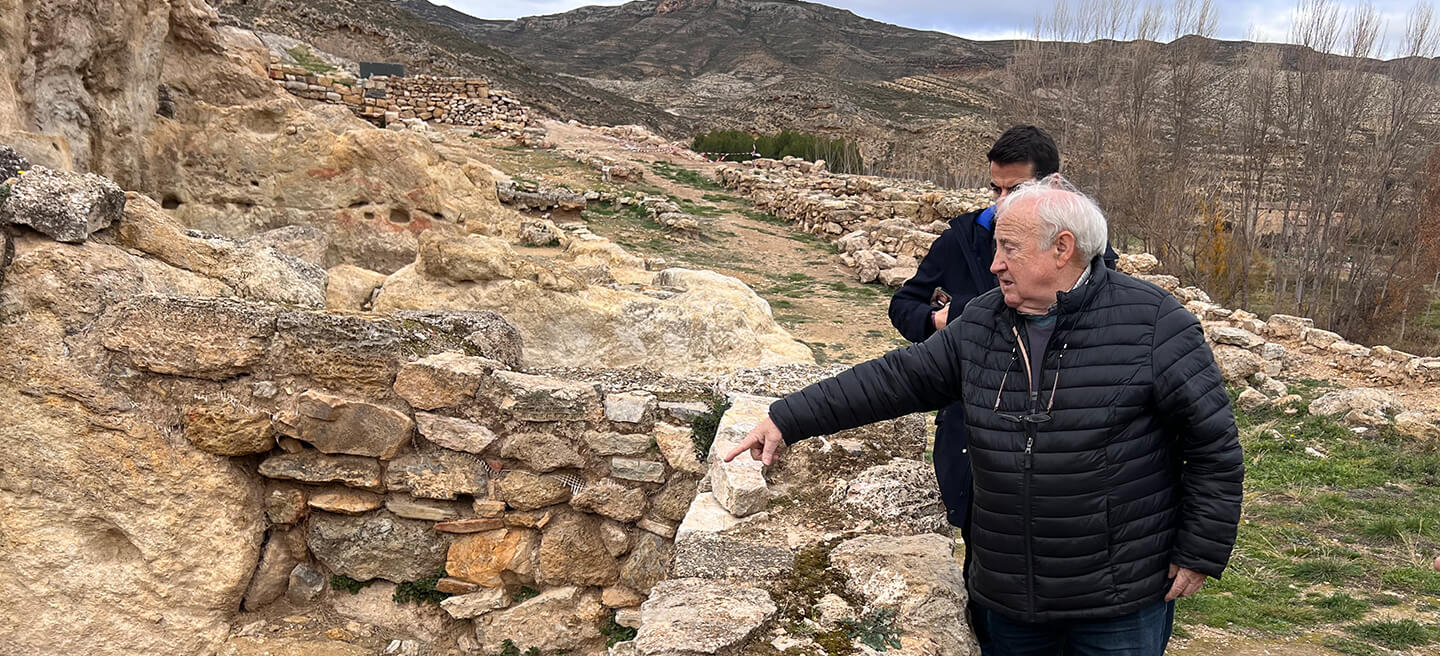
Professor José Antonio Hernández Vera, principal researcher of the Contrebia Leucade archaeological site.
Ontañón Contrebia has been created to pay homage to the most distant history of viticulture in Rioja through the fusion with a Rioja variety which appeared thanks to a happy quirk of nature (*), a history that has seen the passing of more than two thousand two hundred years and which is excited to reflect the ties between our land and vine cultivation and winemaking. It is undoubtedly one of our main identifying features: historical viticulture and a variety which in unique and indigenous to Rioja. What better combination to name such a Riojan wine and so rooted to the land where the first wines began to be made in a region which over the centuries has become the standard bearer for Spanish and European wine?
History of Contrebia Leucade
Contrebia Leucade is one of the most historically interesting and architecturally conserved Celtiberian sites in the Iberian Peninsula. Its oldest remains date back to the start of the first millennium BC. The vestiges and ruins of the city are located within the boundaries of Aguilar del Río Alhama, very close to the Inestrillas quarter, at the mid-point of the course of this tributary on the right bank of the Ebro, and are accessible and open to visits.
In his doctoral thesis, defended on 22 May 1978, Professor José Antonio Hernández Vera states the first settlement of Contrebia Leucade was restricted to the hilltop of the western side and was founded in an advanced moment during the First Iron Age. Between the second half of the 4th and first half of the third centuries BC, the population of the first settlement was boosted by newcomers from the central plateau, the Meseta, who crossed the barrier of the Iberian System to reach the line formed by the Ebro. These new inhabitants belonged to the Arevaco tribe, a pre-Roman, Celtiberian people settled in an area between the mountains of the Iberian System and the Duero valley, bordering with the Vacceans to the west, a tribe established in the eastern-central part of the Iberian Peninsula in modern-day Spain. Rome formed auxiliary troops with the Arevaci for the imperial army. These gave the settlement its historical name of Contrebia Leucade. With their arrival it took on its definitive layout. The surface area of the initial settlement was substantially increased towards the valley and the immediate mountain and from there they fought back the arrival of the Romans.
Contrebia took active part in the Sertorian wars. It was besieged and taken in the year 77 BC, after 40 years of siege. This fact did not lead to its destruction or abandonment, as Sertorius himself established an important base for supplies and troops in Contrebia. It wasn’t until the Early Middle Ages that the settlement became uninhabited after a more precarious period of decline.
What does Contrebia Leucade mean?
Its etymology is Celtic and it has various meanings: group of dwellings, communal living, collection of houses, settlement. In the case of the Riojan settlement, the place-name is qualified with the adjective ‘Leucade’, which refers to the colour white so that taken together, Contrebia Leucade means “White City’.
Wine in Contrebia
“We are, by a long way, dealing
here with the oldest wine presses
in the whole of La Rioja”
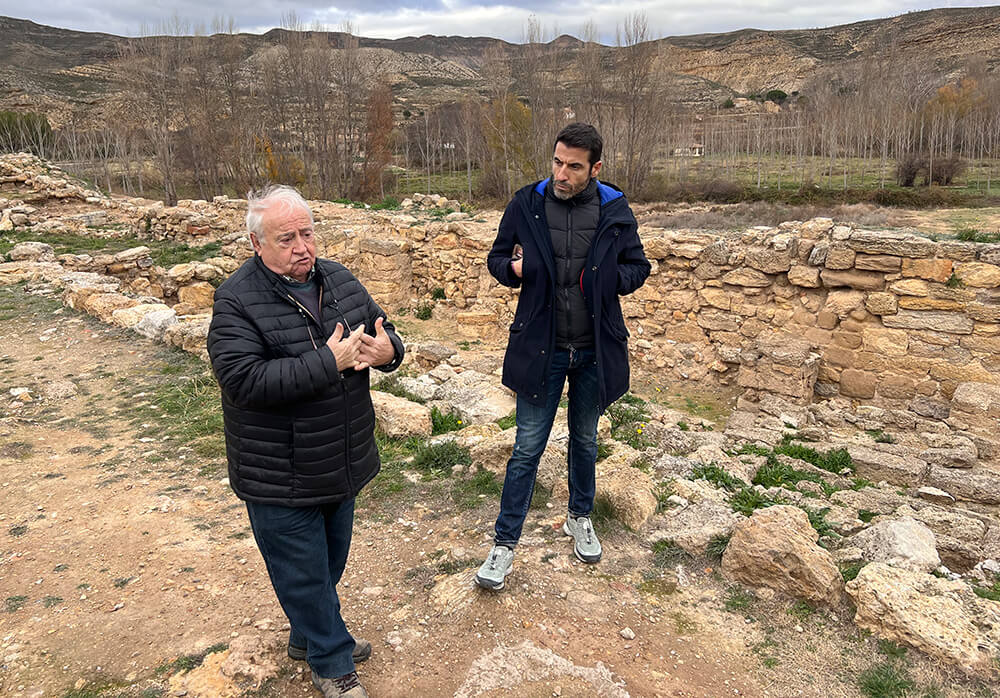
José Antonio Hernández Vera, at the Contrebia Leucade archaeological site.
José Antonio Hernández Vera, archaeologist and director of the excavations, explained how wine was made in Contrebia: “The basin, where the grapes were trodden, is the fundamental element. The must fell into the tanks. From here it was removed and poured into large dolia or earthenware vats, where fermentation took place. Significant pieces of these vessels have been found filling the pools. It is curious because one of the fragments bears two Iberian letters belonging to the language spoken by the inhabitants who were living in the city before the Roman conquest“.
Hernández Vera, who is also Emeritus professor of Prehistory at the University of Zaragoza, stresses that “by a long way, these are the oldest wine presses in the whole of La Rioja. There are two perfectly conserved examples and another three which are not complete. It is clear that the inhabitants of Contrebia were systematically making wine. As well as these structures, there are also rooms devoted to storing large dolia”.
The three wine presses discovered in Contrebia Leucade belonged to private homes and were located on the ground floor of the houses. The first, which was discovered in the nineteen nineties, was identified as being simply an industrial type of installation, but it was “in very poor state of conservation”. The second was found in the southernmost point of the city in 2004 and was better conserved, but the third wine press, discovered in 2011, is much bigger than the earlier ones, which would seem to suggest that the production would be greater than needed for the family’s consumption and that, in part, it would be sold in the settlement and in neighbouring cities.
Contrebia Leucade can be considered the place where the first steps in winemaking were taken in the lands which are nowadays part of La Rioja and that the inhabitants of these lands were making wine in a very similar way to that which was still being employed in many houses and bodega quarters until only a few decades ago.
Tempranillo blanco
The most Riojan story
Tempranillo blanco is an identity badge for Rioja as it is unique to our Denominación de Origen Calificada and cannot be found anywhere else in the world. Its origins stem from a natural mutation detected in a vineyard in Murillo de Rio Leza (Rioja Oriental), at the end of the eighties. In 1989, a grower named Jesús Galilea discovered a white grape spur on an old red tempranillo vine plant. He pruned the mutant shoot and this was the start of the birth of a 100% pure Riojan variety, which in 2008 was added to the list of approved grapes in the DOCa Rioja catalogue.
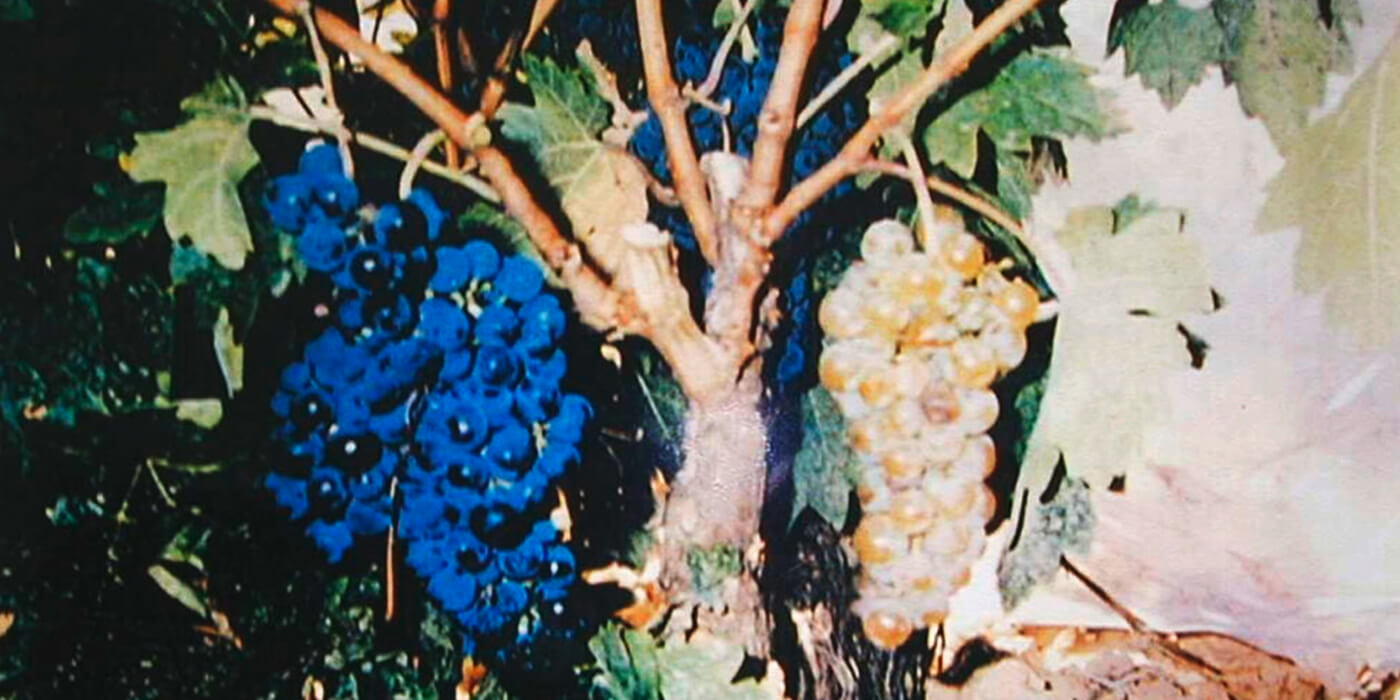
Cluster of Tempranillo Blanco on the original mutation vine, owned by the vintner Jesús Galilea from Murillo de Río Leza.
From the buds of that mutant shoot, a new variety was cloned, allowing new white wines with great oenological potential to be produced and which today has spread to a Surface area of nearly 800 hectares in the Denominación de Origen Calificada (DOCa) Rioja.
A research group from the Instituto de Ciencias de la Vid y del Vino (ICVV) identified the cause of the mutation and it originates in complex reorganisation of the plant’s genome that follows the typical models of a process known as chromothripsis. This phenomenon involves the massive fragmentation of some of the chromosomes which form part of the organism’s genome. In the Tempranillo blanco this remodelling led to the loss of genetic information including the genes necessary for the grape skins to accumulate the anthocyanin pigments responsible for their colour. The ICVV Study showed that the chromothripsis can occur naturally during the plants’ growth, especially in woody species which, as in the case of the vine, can multiply vegetatively for cycles.
Since its authorisation in 2008, tempranillo blanco has become the second most important white grape variety of the DOC Rioja in terms of surface area planted, which shows the acceptance the grape has received among Rioja growers and bodegas. As a variety derived from Tempranillo, it shares with many of the morphological features and development, resistance to pests and diseases, phenological behaviour and adaptation to the growing conditions in the DOC Rioja, which facilitates understanding of its cultivation in similar conditions to the typical ones for tempranillo.
A happy quirk of nature * Tempranillo blanco * A happy quirk of nature * Tempranillo blanco *
The production of Ontañón Contrebia
One of the keys in the production of this wine is the early morning harvesting so that the berries do not exceed ten degrees centigrade and the aromatic properties of the tempranillo blanco remain protected to the maximum. “With the cold the aromas of the fruit are maintained. We regard this process as essential in the bodega. The health of the vineyard is also vital. That’s why we take so much care in the selection of the grapes”, explains Rubén Pérez Cuevas, the bodega’s winemaker.
In the bodega, first the must undergoes gentle maceration with the skins before fermentation so as to achieve the maximum extraction of the aromatic potential. “With this maceration we seek to give the wine more body and a Little more volume and to find a more intense and complex aromatic profile”, stresses Rubén.
The origin of the pre-fermentative maceration as a technique for improving extraction comes from Burgundy, as the result of the cold temperatures at harvest time was that the grapes arrived at the winery at very low temperatures and it took a few days for spontaneous fermentation to begin. The French winemakers realised the benefits of this delay and began looking for a system to lengthen this pre-fermentative process because it multiplied the transfer of compounds.
One of the keys of our ONTAÑÓN CONTREBIA is the methodical working of the lees.
Work with lees
But what are the lees of a wine?
The lees are the solid sediment which precipitates during the winemaking process. Specifically, they are the yeast cells and remains of skins and pulp (inactive yeast, lactic bacteria, fatty acids and polyphenols) which remain in suspension in the wine after fermentation and finally settle to the bottom of the tank. The larger lees are removed in the first racking and only the so-called fine lees are retained, which are the ones which contain the best organoleptic properties, as well as providing the wine with a better response to other negative processes such as oxidation and reduction.
Ageing with the fine lees brings many benefits, from greater unctuousness and volume to the property of reducing astringency. Another very beneficial aspect is that they help fix aromas, complexity and provide richer nuances. As they contain yeast, the lees also help fermentation. Bakers’ shop and pastry aromas are typical of the lees, but they also have the ability to help heighten the typical aromas of the variety, in this case tempranillo blanco.
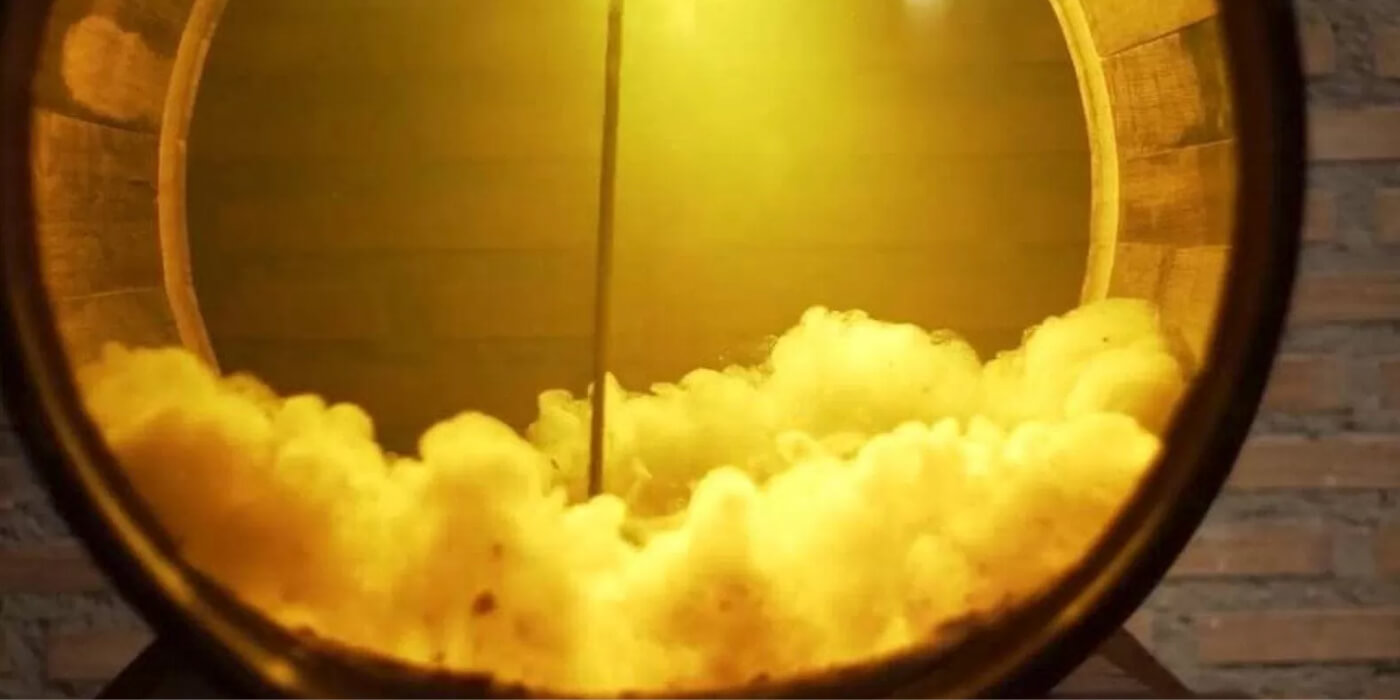
View of a barrel with lees.
The bazuqueo
In ONTAÑÓN CONTREBIA we perform a technique known as bazuqueo, which is called bâtonnage in French and consists in stirring the wine with the help of an L-shaped pole (bâton, in French, hence the name of the technique) so that the lees, which are at the bottom of the vat, are placed in suspension. This motion produces a phenomenon known as autolysis, which consists in breaking the cell walls of the finest lees, which as they pass into the wine, bring the benefits we have described above.
For our oenologist, Rubén Pérez Cuevas, this work is crucial: “We perform it with the utmost care and in a systematic way because the work with these fine lees helps us greatly in the extraction of flavour, texture and aroma from this variety, which is so special, and which we present in this wine with no contribution from the wood. It is a single variety wine par excellence, in which we face the challenge of helping the tempranillo blanco to express itself in its sharpest, most pared down dimension”.
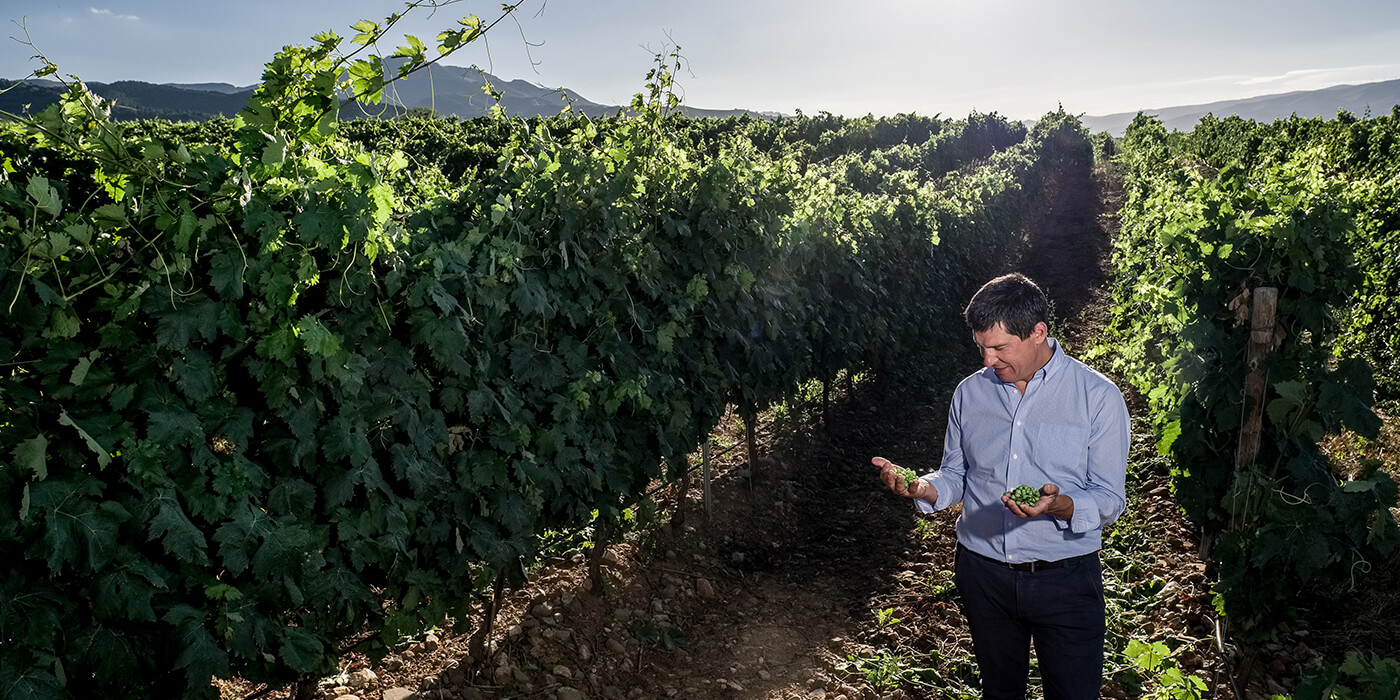
Rubén Pérez Cuevas, winemaker at Ontañón, in the vineyard.
The keys to wine
What is Contrebia?
1.- A Celtiberian city
It is the first half of the name of a city of Celtiberian origin located in Aguilar del Río Alhama (Rioja Oriental).
2.- Origins
Its origins date back to the Bronze Age and after various stages, such as the Celtiberian, Roman and Visigoth settlements, it was abandoned in the 9th century.
3.- Etymology of the name
The name is of Celtic etymology and has various meanings: group of dwellings, communal living, and collection of houses. In the case of the Riojan settlement, the place-name is qualified with the adjective ‘Leucade’, which refers to the colour white so that taken together, Contrebia Leucade means “White City’.
4.- Contrebia is the place of origin of Riojan wine furthest back in time.
Contrebia Leucade can be considered the place where the first steps in winemaking were taken in La Rioja. Contrebia Leucade is the oldest evidence in Rioja of people working in viticulture. The director of the excavations, José Antonio Hernández Vera, spoke of the Discovery of a wine press in the northern sector of the archaeological site, of which the general structure has survived: the grape treading basin and the ‘torcos’, that is, the pools into which the must fell.
“It was used at harvest time and once this was over, it was cleaned and used for other purposes, such as storing the wine in large earthenware jars “.
Among its stones and land in 2003 the first wine press was found which the inhabitants of these lands used to make wine in a way which was very similar to that employed in many bodega quarters of La Rioja until the middle of the 20th century.
The why
1.-It is a historical space in Rioja Baja – Rioja Oriental. The cradle of our wines, land of our vineyards and the origin of our family.
2.- The tempranillo blanco variety, unique in the world, originates from a town in Rioja Oriental and is something exclusive to our DOCA RIOJA. And Contrebia is the White City.
3.- In Contrebia Leucade the earliest vestiges of wine growing in La Rioja appear for the first time.
Tasting
Straw-yellow with greenish glints.
A very elegant nose with aromas of pineapple, banana and cooking apples, as well
as subtle hints of white blossom.
Its freshness, balanced acidity and the sensation of volume in the mouth are what
stand out in this wine. With a long, lingering finish.
12,5 % Alc. by Vol
Downloads
Tasting Notes 2023
· PDF ·
Image Bottle
· JPG ·
Label
· PDF ·
